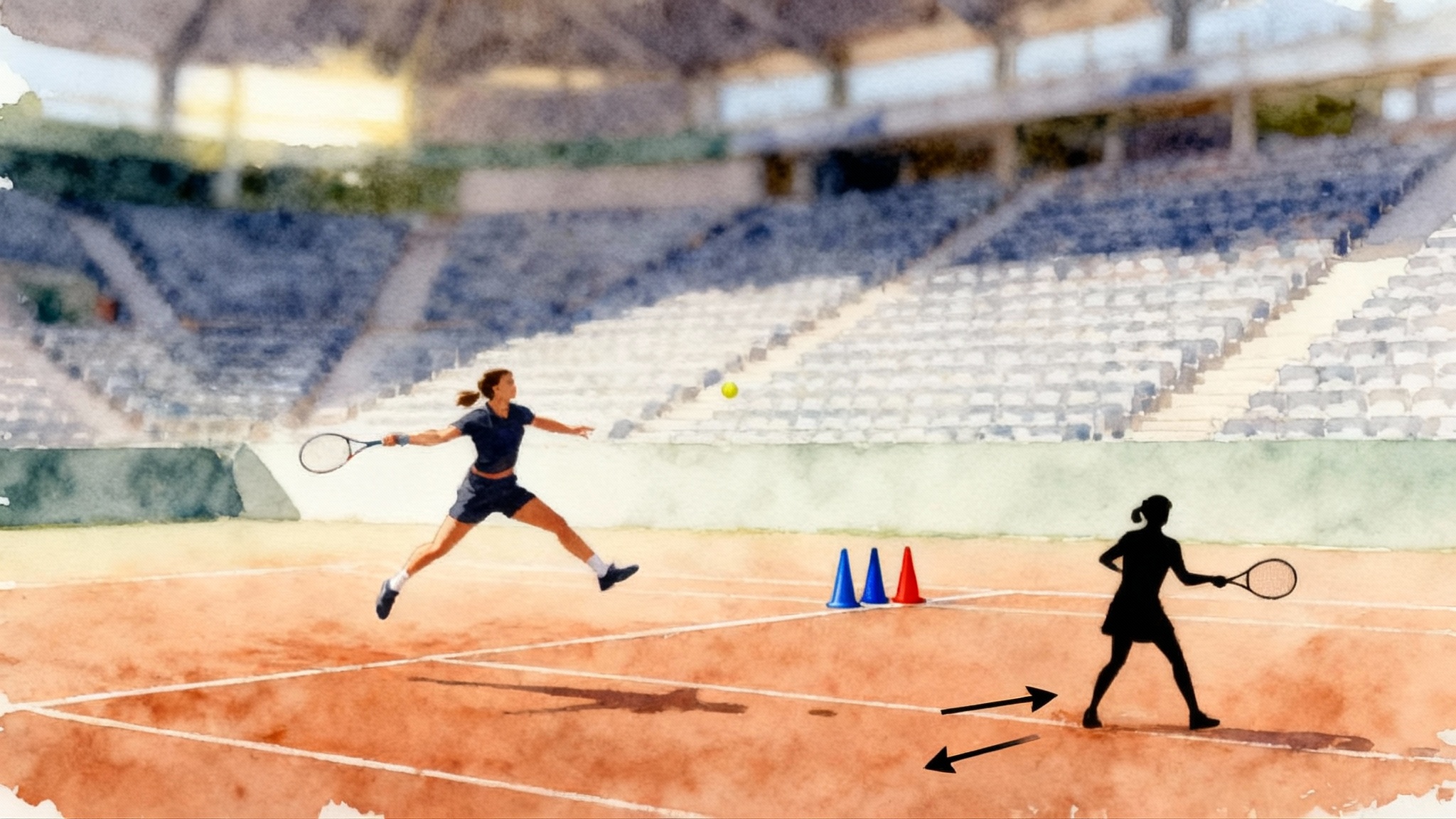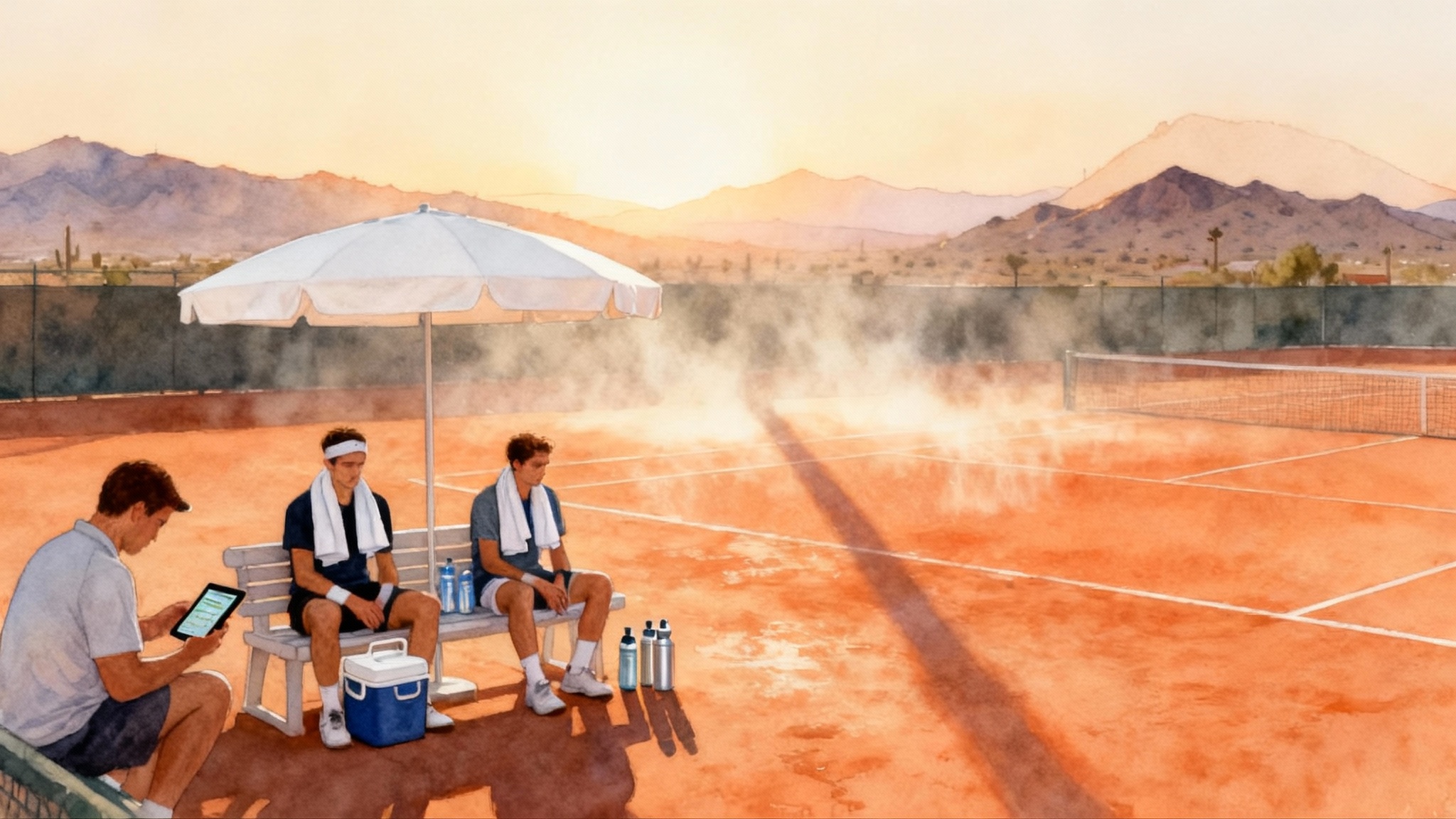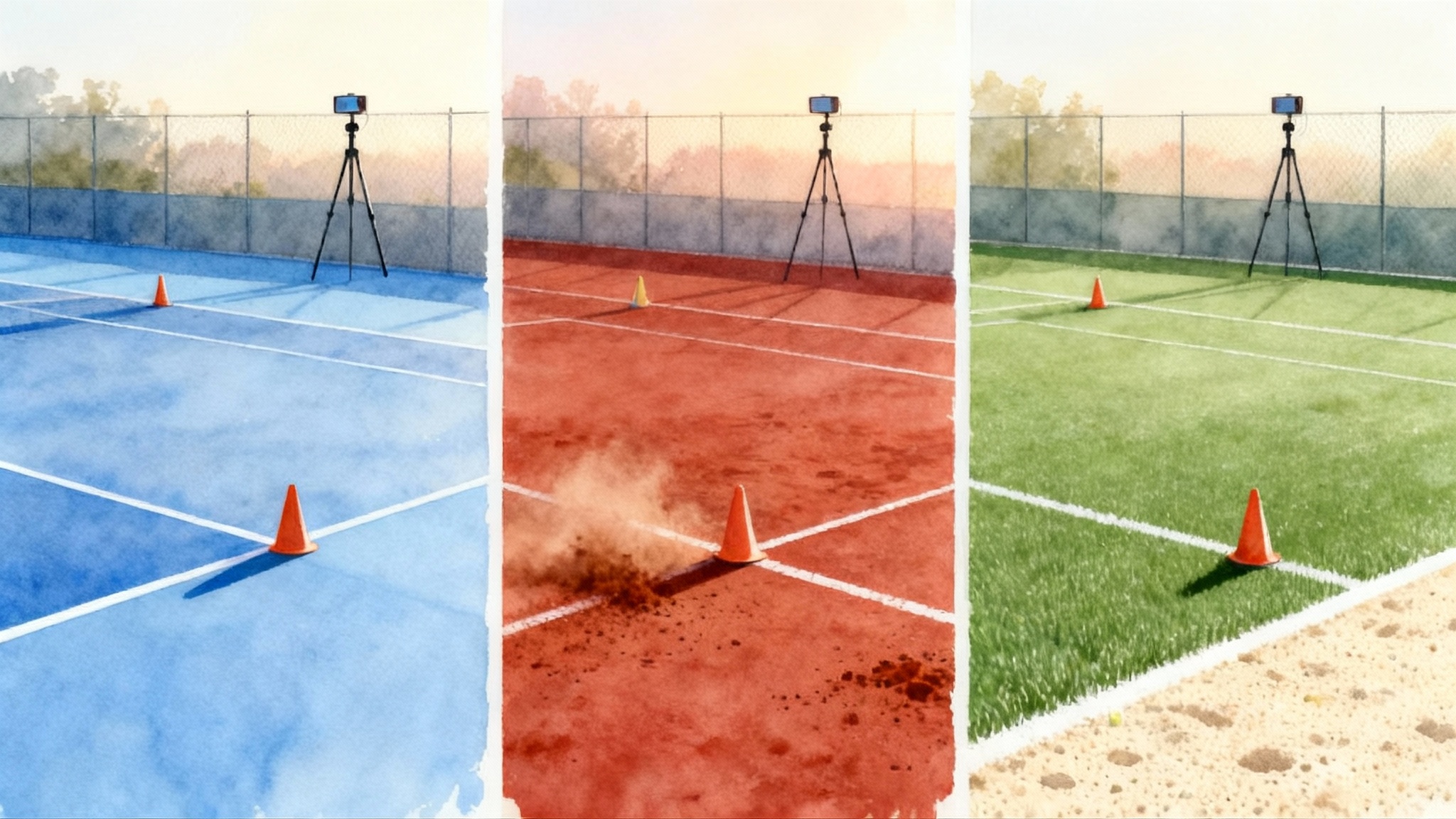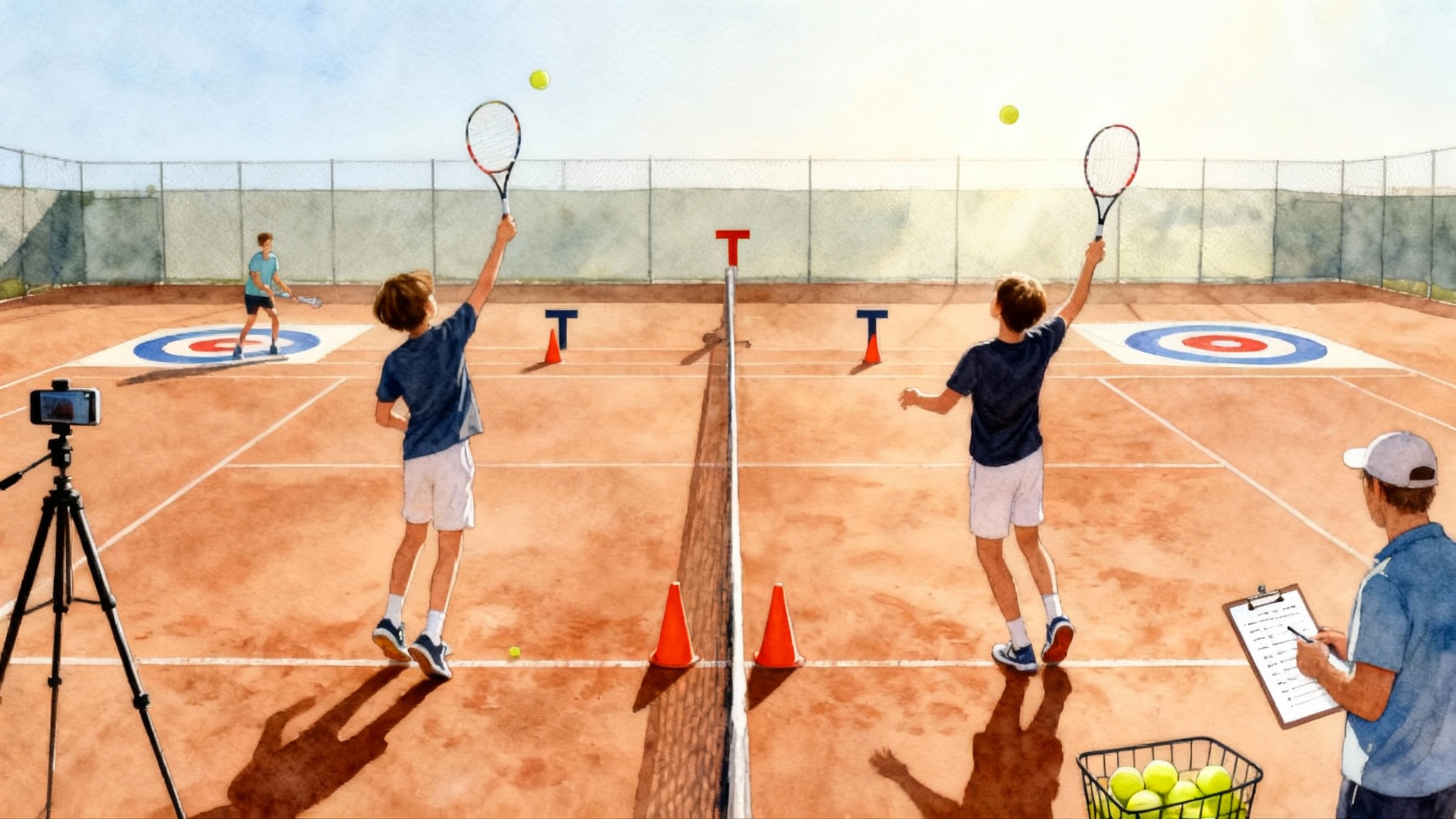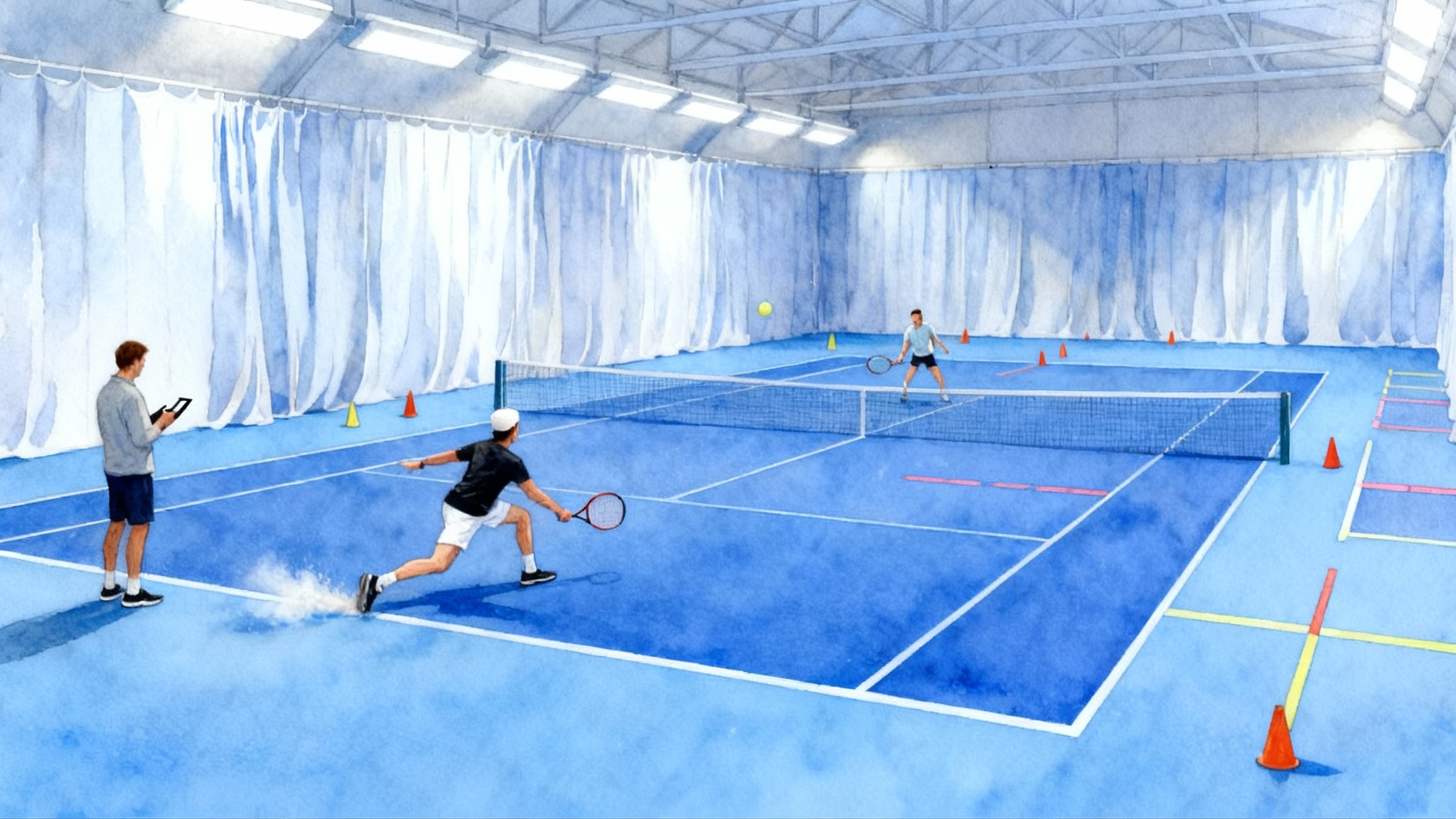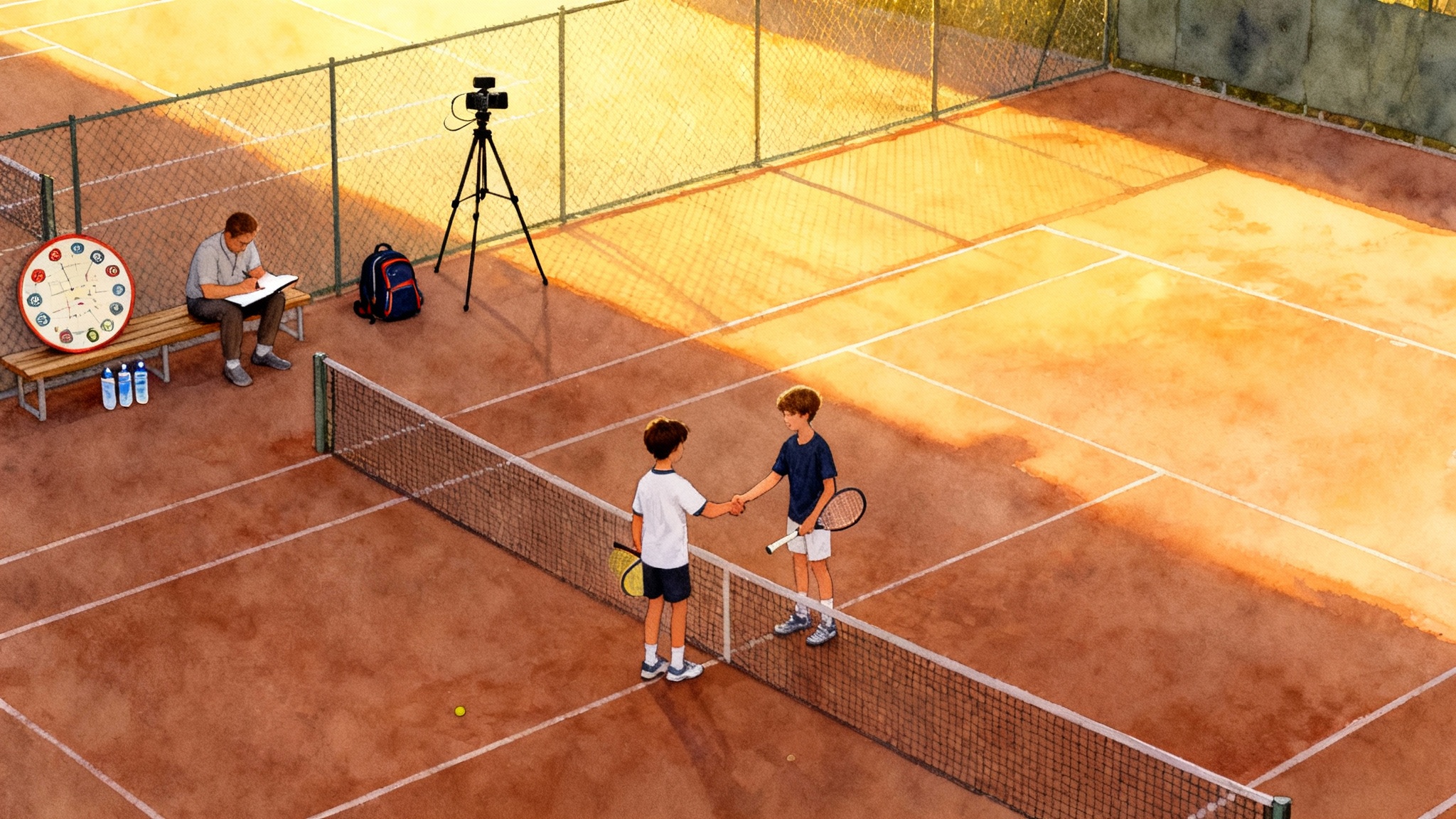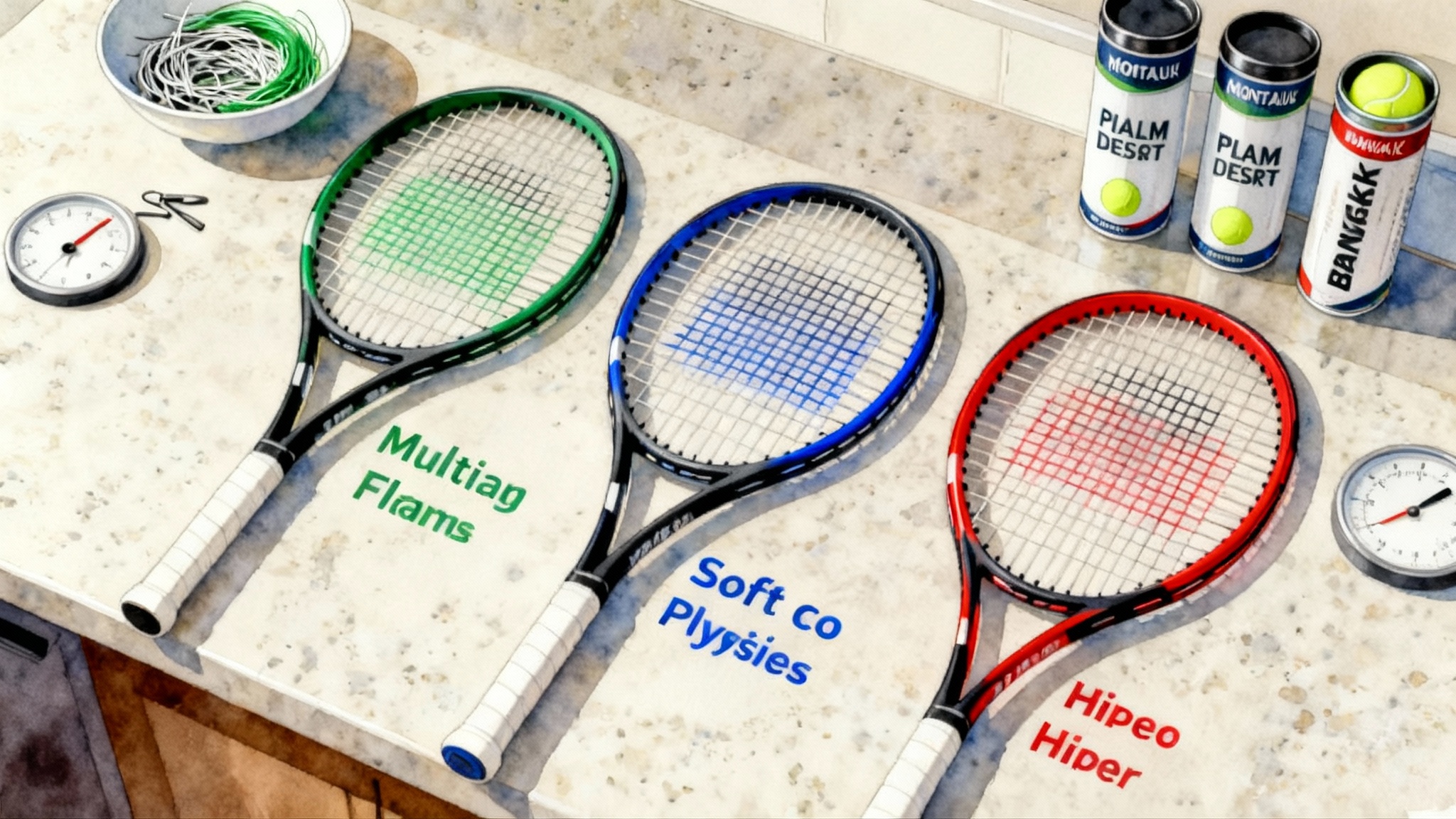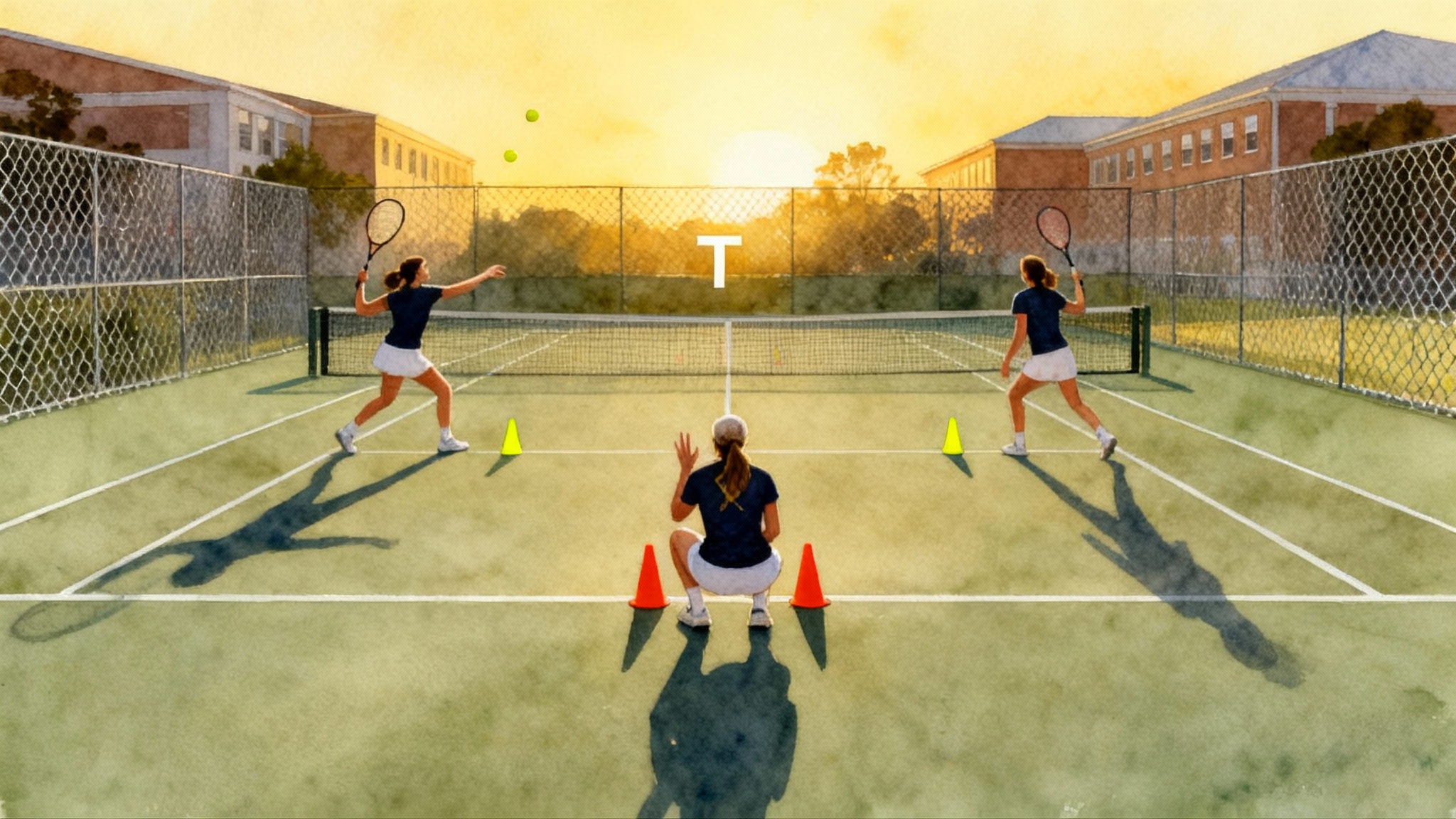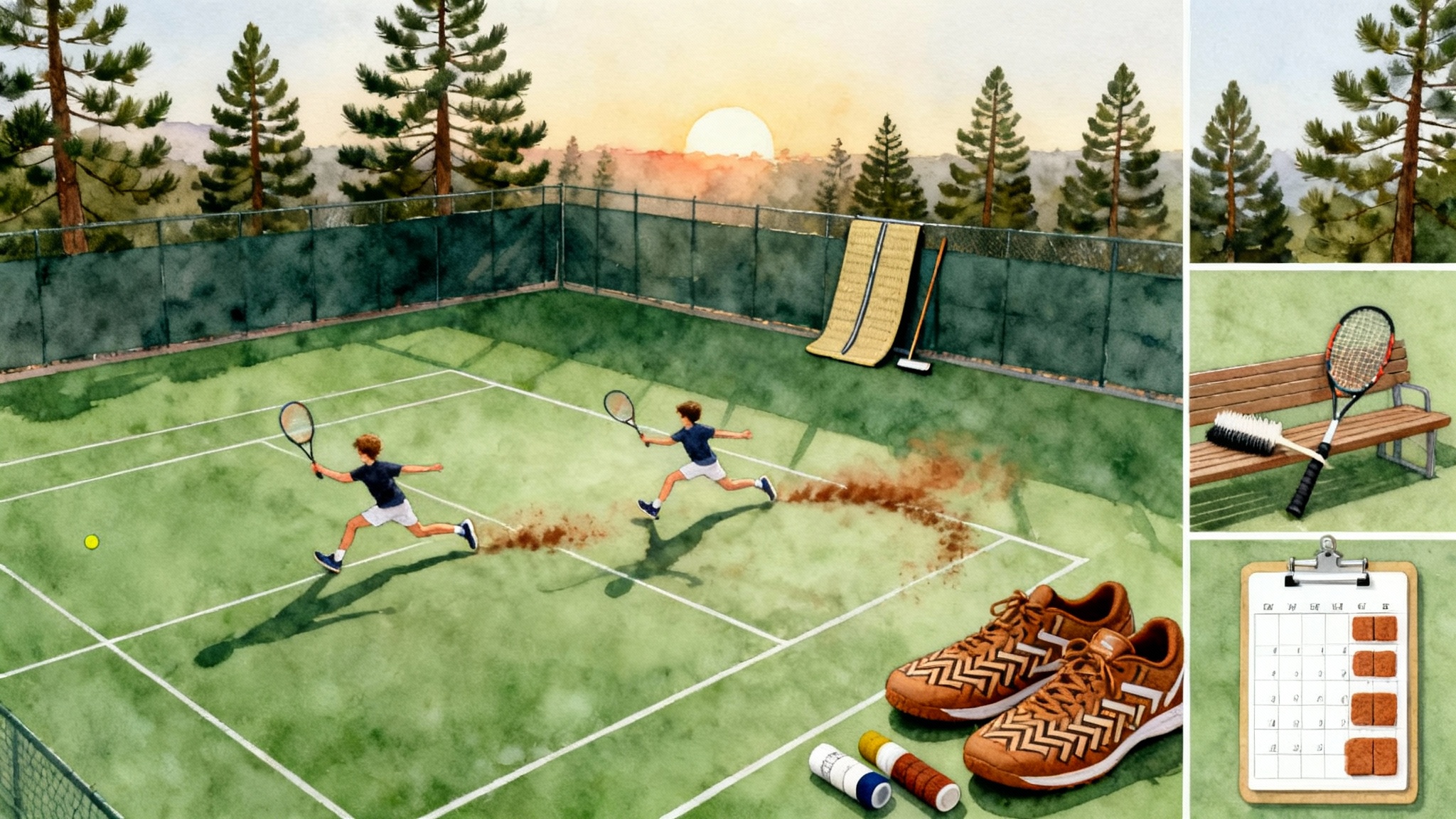Junior-to-College Tennis 2025: A Month-by-Month Blueprint
A practical, month-by-month guide for families steering a high school player from sophomore year to a college roster. Clear benchmarks, strength and conditioning milestones, academic checkpoints, smart scheduling, outreach, and academy partnership tips.
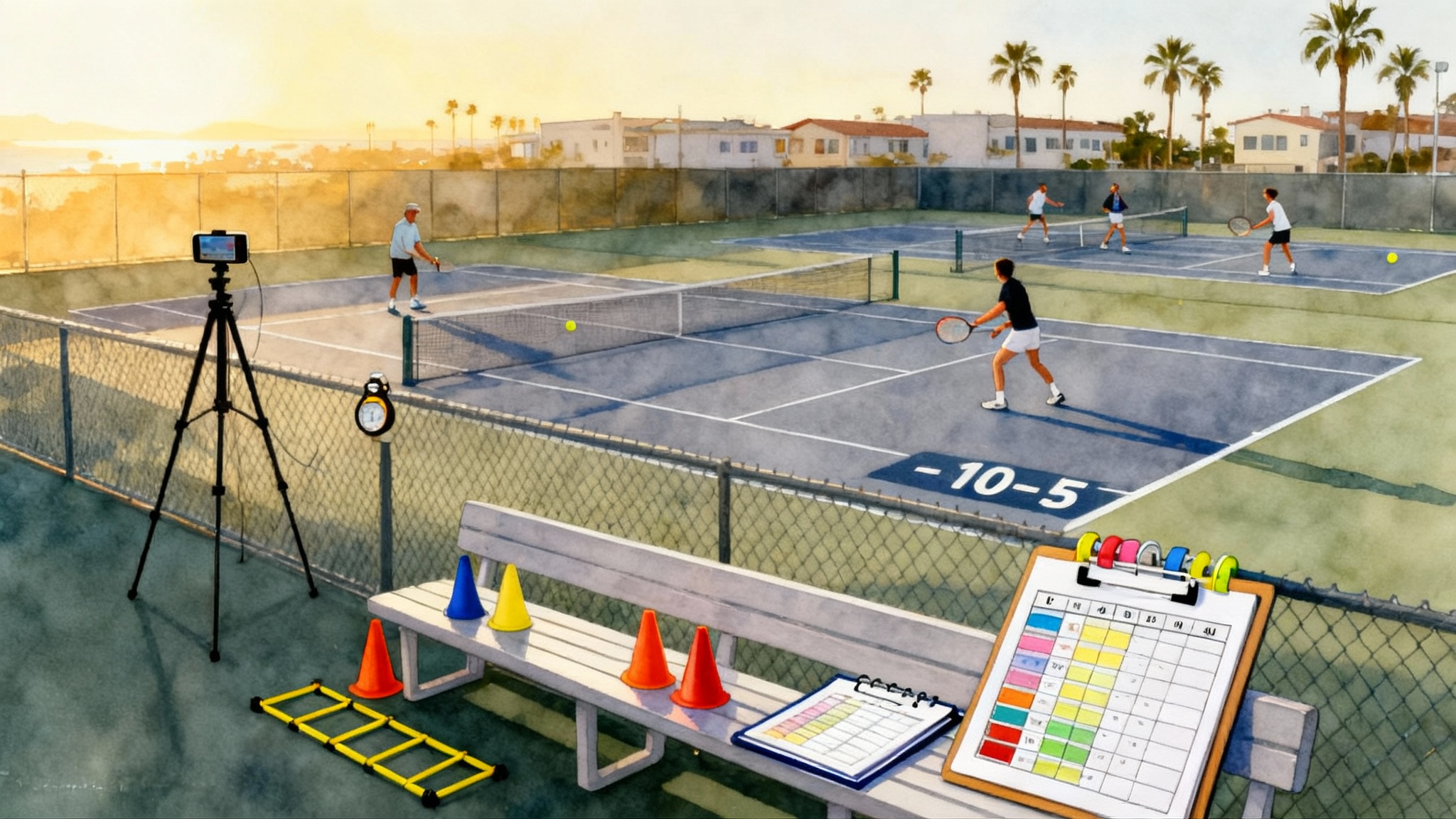
Why a month-by-month blueprint in 2025
College coaches are recruiting earlier, evaluating more precisely, and balancing roster math against academic fit. Families do not need more noise. They need a calendar that turns the next 24 months into specific actions a player can execute. This blueprint starts with what coaches actually scout, adds age-smart Strength and Conditioning (S&C) milestones, weaves in academics and eligibility, and finishes with an outreach plan that respects rules and coaches’ time. When the work is organized by month, momentum replaces stress.
What college coaches actually scout in tennis
Think of the evaluation as three layers: repeatable skills, match behaviors under pressure, and growth trends.
-
Singles benchmarks coaches notice
- First serve: 60 percent in, with at least a 65 percent points-won rate behind first serve against comparable opposition.
- Second serve: 85 percent in, heavy enough to prevent attack, with 50 percent points won.
- Return quality: over half of returns landing deep past the service line, especially on the backhand.
- Rally tolerance: eight or more neutral-ball exchanges in practice live ball. Can the player reset when stretched, not just attack when ahead?
- Short-ball conversion: at least 7 of 10 short balls finished within three shots, not always with a winner but with advantage created.
- Pressure points: break points converted near 45 percent and defended near 55 percent over a sample of 8 to 10 matches.
-
Doubles benchmarks that separate recruits
- Serve locations that open middle and body, not just wide. First volleys that land deep middle to reduce angles.
- Poach rate: an intentional poach or fake on roughly one in three return games. Not reckless, but present.
- Formation fluency: conventional, I-formation, and Australian formation used with clear hand signals and play calls.
- Transition game: willingness to serve and volley selectively and to close from the baseline within two balls when the opportunity is there.
- Team behaviors: communication between points, eye contact, and a clear plan for the next return game.
-
Growth trends
Coaches compare fall and spring footage. They want to see the same serve at a higher percentage, the same forehand with better shot selection, and the same athlete with improved resilience in a third set. That is why the calendar below builds in re-testing and film curation. Use DIY tennis video analysis to capture consistent angles and clips in each cycle.
S&C milestones by age that support tennis
Strength and Conditioning means building movement quality first, then power that transfers to the court.
- Movement screen every 12 weeks: deep squat, single-leg balance for 30 seconds each side, and a simple lateral lunge. If form breaks, regress and build stability.
- Acceleration and change of direction: a timed 20-meter sprint and a 5-10-5 shuttle. By age 16, many competitive players target around 3.2 to 3.4 seconds for 20 meters and near 5.2 to 5.6 seconds for the shuttle. Treat these as guides, not gates.
- Repeat sprint ability: 10 by 20-meter sprints with 20 seconds rest. Aim for the average to stay within 0.3 seconds of the best.
- Relative strength: 25 smooth push-ups, 5 to 8 chin-ups, a 2-minute front plank without form loss.
- Rotational power: standing medicine ball rotational throw with a 3-kilogram ball to a wall. Track distance. The number matters less than month-over-month improvement.
Monitor growth spurts. During rapid growth, pull volume back on high-impact plyometrics and re-check landing mechanics weekly. Build two strength blocks per year that are four to six weeks long, then maintain during dense tournament periods.
Academic and eligibility checkpoints
Your transcript is the first roster spot. The National Collegiate Athletic Association (NCAA) evaluates 16 core courses and a core-course grade point average. Verify your school’s approved courses and the 10/7 progression rule using the NCAA core-course requirements. Start there before you pick junior-year classes.
- Register with the Eligibility Center: create a free profile in late sophomore year, then upgrade to the certification account in junior year before any official visit.
- Test planning: many colleges are test optional, but a strong SAT or ACT still helps at academically selective schools and can strengthen a pre-read. Take a diagnostic early in junior year to pick SAT or ACT, then plan one spring and one late-summer attempt.
- Counselor alignment: bring your target school list to your counselor. Confirm you will hit the required English, math, science, and language credits, and that dual-enrollment or online courses appear correctly on your transcript.
Smart tournament scheduling without rating-chasing
Coaches read your schedule like a syllabus. They look for challenge, consistency, and resilience, not just a rating.
- Build a calendar by cycles, not points: for each 8 to 10 week cycle, plan two local confidence events, one regional stretch event, and one rest week. Add a national event only if training quality remains high.
- Track draw strength: a quarterfinal in a deep sectional event often proves more than a small-title run. Note the rankings or typical college commits found in that event over the last few years.
- Surfaces and conditions: include at least one cycle per year on faster hard or indoor courts and one on slower conditions. Coaches value adaptability.
- Match count target: 30 to 50 meaningful matches across the year, which includes high school season if it is competitive. After every five matches, review film and one data trend.
- Planning help: set up your weeks with our smart tennis week templates and replicate the columns for monthly cycles.
Coach outreach and visit etiquette
Under current rules, Division I coaches can respond directly starting around mid June following sophomore year, and in-person recruiting conversations on campus usually begin around early August before junior year. The United States Tennis Association maintains a helpful summary of these timelines. See the June 15 and August 1 recruiting dates for context.
- Before coaches can respond: you can still email updates, complete program questionnaires, and invite them to watch a livestream. They may not reply, but you are building awareness.
- Subject line that earns a click: “2026 recruit, righty, all-court, 3.85 GPA, Top 40 SoCal, 5'10 serves to body.” Specific and scannable.
- One-page player brief: headshot, graduation year, contact info, coach contacts, academics, playing style, latest results with context, next five events, and a short film link. Keep the clip list short and representative.
- Call preparation: when calls are permitted, have a 30 second intro, two questions about development at that program, and your next three competitive dates.
- Visit etiquette: show up early, be curious, watch current players’ body language, ask about academic support, travel load, and how they handle redshirt or development years. Send a thank you email that restates fit and your next film update.
How an academy partner structures the process
A good academy is not a megaphone. It is an amplifier for clarity. As an example, Steve Adamson Tennis Academy in San Diego runs at the Barnes Tennis Center. A partner like this can tighten your process in three ways.
- Evaluation days that match what college staffs measure
- Skills: first and second serve targets by zone, return depth under pressure, 10-ball live neutral rally, plus doubles first-volley and poach reps.
- S&C: movement screen, 20-meter and 5-10-5 times, medicine ball throws. Results go into a shared dashboard so coaches can see progress.
- Match-film curation instead of highlight reels
- Tag three pressure situations across several matches: break points, 30-30 points, and tiebreaks. Pull 10 to 12 points that show decision quality, not circus shots. Tools like SwingVision, Playsight, or Tennis Analytics can export short playlists with basic stats. Keep the full film in a private folder and share upon request.
- Networking with intent
- The academy lead coach calls two or three programs that match your profile. The call is not a sales pitch. It is a development update tied to your upcoming events and a short film list. The best partners protect their credibility by sending only prepared players.
The blueprint: month-by-month from sophomore to senior year
This plan assumes a fall school start. Shift months as needed for your academic calendar.
Sophomore year
-
August
- Meet with your counselor to map 16 NCAA core courses for the next two years.
- Baseline testing: 20-meter sprint, 5-10-5 shuttle, push-ups, chin-ups, plank, and medicine ball throws. Record all results.
- Technical focus: serve locations by target and second-serve shape. Film one practice serve session.
-
September
- Build your three-tier college list: 6 reach, 8 match, 6 safety. Note roster sizes, graduation years, and typical playing styles at each program.
- Competition: one local event with a plan to practice serve plus one and backhand depth.
- S&C: two strength sessions per week emphasizing single-leg strength and trunk stiffness.
-
October
- Doubles month: learn or sharpen I-formation and Australian formation. Practice hand signals and play calls.
- Attend one nearby college dual match. Bring a small notebook and write down how top pairs hold serve.
-
November
- Film two pressure segments in tournament play: any tiebreak and a service game at 4-4. Tag them for later.
- Check progress against your September benchmarks. Adjust your serve targets or return depth goals.
-
December
- Academics: close the semester strong. Submit transcript requests for your records.
- Training block: three to four weeks with one extra strength day and extra serve volume. Practice first-volley depth for doubles.
-
January
- Create your one-page player brief and a private film folder. No sizzle editing. Keep clips short and labeled.
- Competition: one event that favors building confidence. Execute doubles formations in real matches.
-
February
- Testing: take a diagnostic SAT or ACT to choose your test lane. If school testing is heavy, keep match load modest.
- Skill: return deep middle on big points. Track a rolling count of short-ball conversions.
-
March
- Spring stretch event: a sectional or strong regional draw. Head into it with a simple pattern plan.
- Start completing questionnaires on school websites. Save confirmation emails.
-
April
- References: ask your high school and academy coaches whether they are comfortable serving as contacts. Share your player brief with them.
- S&C: re-test sprint and shuttle. If results stagnate, simplify your lifts and reduce junk mileage.
-
May
- Eligibility Center: create the free profile account. Confirm your high school’s approved course list aligns with next year’s classes.
- Film: update your pressure playlist with the strongest recent points.
-
June
- Rules shift around mid June. Prepare for legitimate two-way communication. Draft a short call script and a concise update email.
- Build an outreach pipeline of roughly 20 programs. Schedule two “show me” tournaments in late June and July.
-
July
- Outreach cadence: send a short update on Monday with upcoming matches and court numbers if known. Keep it respectful and light.
- Visit planning: if a program invites you to campus conversations when permissible, pick dates that do not cannibalize training.
Junior year
-
August
- Campus conversations usually become possible around early August. If invited, schedule one or two visits. Keep a question list focused on development, academics, and team culture.
- Academics: confirm your core courses and get ahead in any class that looks heavy.
-
September
- Competition: one confidence event and one stretch event. Capture one full match on film.
- Outreach: send coaches a two paragraph update with your schedule, one new film segment, and one pointed question about their player pathway.
-
October
- Doubles: build a scoreboard for your team’s hold percentage and break percentage. Share the trend in your next update.
- Testing: first official SAT or ACT attempt late month if that fits your plan.
-
November
- Training block: two to three weeks of heavier strength. Serve targets by zone, second-serve speed under control, and first-volley depth.
- If interest is serious, some programs will offer overnight or day visits. Be punctual, take notes, and observe how coaches teach, not just what they say.
-
December
- Academic close: maintain or raise your core-course GPA. Send a brief academic update if a program has asked.
- Film: compile your year-over-year improvement clip. Same skills, better outcomes.
-
January
- Competition: one quality event. Use it to demonstrate serve locations you have been training since November.
- Outreach: tighten your list to 10 to 12 programs that match interest on both sides.
-
February
- Second SAT or ACT attempt if needed. Keep the tennis load light in the test week.
- S&C: re-test movement and change of direction. Address any asymmetries.
-
March
- Spring visits: if permitted and invited, schedule visits that include a class sit-in and a meeting with academic support staff.
- Ask direct but respectful questions about roster needs by class year.
-
April
- Stretch event with strong draws. Share film and a two sentence summary of what changed in your decision-making on big points.
- If a coach asks for a pre-read at an academically selective school, send documents quickly and accurately.
-
May
- Eligibility Center: upgrade to the certification account if you expect any official visits. Confirm test scores and transcripts are sent correctly.
- Outreach: clarity month. If a school is not the right fit, say so politely and keep the door professional.
-
June
- Many programs start to set their shortlists. Keep updates brief and useful. Offer two watching opportunities, not five.
- Training: maintain, do not overhaul. Small improvements to serve percentage and doubles formations are worth more than reinventions.
-
July
- Peak competition: one national-level event if appropriate, one regional, then a rest week. Avoid chasing points across time zones without purpose.
- Decision filter: coaching style fit, role in year one, academic pathway, and travel demands. Write these on paper and score options honestly.
Senior year
-
August
- Finalize your academic schedule. Confirm any missing core courses and fix gaps.
- Visits and conversations continue. Ask about fall individual events, travel squads, and how new players integrate.
-
September
- Competition: play one local event to stay sharp. Keep training quality high.
- If your path is Division III or a non-scholarship Division I program, understand the timeline around admissions, likely letters, and financial aid. Treat every date the admissions office gives you as a deadline.
-
October
- Many commitments fall here. If you are ready and the fit is right, move decisively. Share a final film playlist that shows pressure points and doubles value.
- If you are still in the process, continue clear communication and ask where you stand. If a program is full, thank them and move on.
-
November
- Academics: keep grades strong to protect admissions outcomes. Update interested coaches with first-quarter results.
- Tennis: short training block. Avoid overplaying.
-
December through February
- Keep form. Share midyear grades and any notable results. If you are committing in this window, confirm what the school needs from the Eligibility Center and admissions.
-
March through May
- Lock in final transcripts and ensure testing and coursework are in the Eligibility Center. Keep training balanced and healthy.
-
June through August
- Pre-college summer: two strength sessions per week, one speed session, and two on-court pattern sessions that mirror how your future program plays. Practice doubles communication with a set partner.
How to use film without turning into a filmmaker
You are not producing a documentary. You are proving you can win college points. Keep a running playlist of 10 to 12 points that shows:
- A first-serve body location followed by a high, deep first volley in doubles.
- A second-serve hold after a double fault.
- A return at 30-40 that lands deep middle and starts a neutral rally you win with patience.
- One defensive-to-offensive transition where you reset, not just rip.
Tag the score and opponent level on each clip. When a coach asks for full context, share the entire match in a private folder. Keep older versions so they can see growth if they want to. For a practical setup, follow our DIY tennis video analysis checklist.
A simple data loop you can sustain
- Every five matches: tally first-serve in percentage, second-serve in percentage, return depth count, and break points for and against.
- Every 12 weeks: re-test the sprint, shuttle, plank, and medicine ball throws. Record shoes, surface, and time of day to keep comparisons honest.
- After each cycle: pick one skill to push and one behavior to protect. For example, push second-serve kick height, protect doubles first-volley depth.
Tools and templates
Use a single-page planning sheet for each month. If you want a formatted planner, start with our smart tennis week templates and adapt the columns for skills, S&C, academics, competition, and outreach.
Final notes on rules and timing
Contact rules do change. Division I coaches can generally communicate beginning June 15 after sophomore year, with in-person recruiting conversations on campus typically allowed starting August 1 before junior year. Confirm specifics with the June 15 and August 1 recruiting dates page and update your plan if the NCAA or conferences adjust.
Final thoughts: progress that shows up on the scoreboard
Families often overestimate what must happen by next week and underestimate what can happen by next season. Coaches recruit trajectories, not just snapshots. If you follow this calendar, your serve percentage will rise, your doubles formations will make more holds easy, your transcript will clear pre-reads, and your communications will sound like a future teammate. That is what moves names from a long list to a locker. Make the next 30 days count, then the next 30 after that. The result is not just a commitment. It is a player who is ready to thrive once they arrive.
